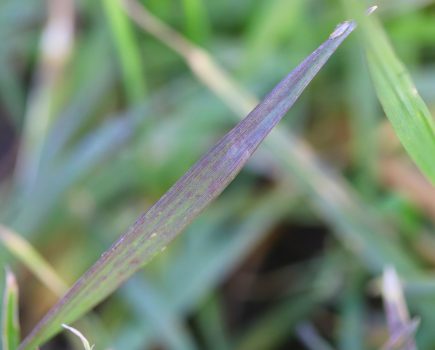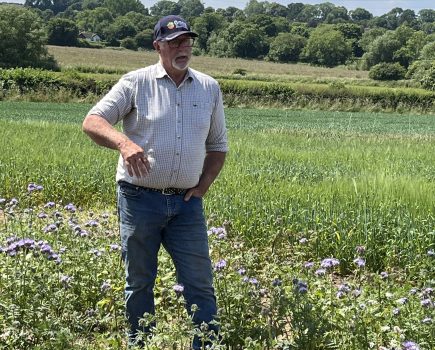Oilseed rape growers are being urged to watch out for signs of Rape Winter Stem Weevil (RWSW) following reports of the pest appearing in crops in eastern counties.
Despite having potential to be more damaging to oilseed rape than cabbage stem flea beetle, RWSW often goes undetected, according to Neil Watson, technical manager for leading agronomy firm, Hutchinsons.
“It’s not a pest that’s monitored by the Rothamsted aphid survey, so we must rely on observations from the field.
“This season, we’ve primarily seen RWSW appear in crops in the East, where it has established itself as the main problem over the past few years, more so than CSFB. However, we can’t rule out the pest being present in other areas too.
“RWSW has become resurgent primarily due to the decline in spraying for CSFB adults in the autumn,” he notes.
One of the main reasons why RWSW can go undetected and be so damaging, is because adults often fly into the crop and start laying eggs without making any outward signs of damage, Mr Watson explains. “This is unlike CSFB adults, where grazing damage is all too evident.”
Additionally, unlike CSFB, adults can fly into crops over a very prolonged period, therefore multiple treatments may be required to coincide with migration phases, especially when they are still in flight at this time of the year.
“Fewer larvae can cause considerably more damage to the stem than CSFB,” he warns.
What to do about RWSW?
Controlling adults in the autumn is the main way to tackle RWSW, as pyrethroids have little or no activity on eggs or larvae, Mr Watson advises.
“Adults typically emerge in the summer and after a resting phase move into oilseed rape crops to feed and lay eggs in leaf stalks during late September and October. However, adult activity and egg laying can continue throughout the winter as long as conditions remain mild, as is the case this year.”
After hatching, larvae develop in petioles then tunnel into stems and feed throughout the winter until exiting in March/April to pupate in the soil, before a new generation emerges after flowering.
Risk should be monitored closely before deciding on the need to treat, and the only practical way of detecting the presence of adults in the crop is by using yellow water traps, he says. “French research shows water traps are not a good indicator of the level of damage that is likely to occur, just the presence within the crop.”
Mr Watson recommends placing a few traps in each crop, just in from the headlands, taking account of the direction of the prevailing wind or nearest neighbouring oilseed rape crop.
“There is no established treatment threshold for RWSW, but if it is easily found in traps, then you know you have a potential problem.”
If treatment is required, it should ideally be applied just before egg laying, which is usually 10-14 days after adult RWSW have been first found in the crop. “It might mean multiple applications being required linked to multiple migration phases into the crop.”
The effectiveness of any treatment is dependent on several factors though, not least the presence of adults in the crop at the time of spraying, says Mr Watson. Another issue is the level of KDR resistance to pyrethroids within the population.
“Resistance has been confirmed in France, so we can only assume it’s the same in the UK, although no data has been collated here.
Identifying RWSW
- Adults are 2-4 mm long
- Typical weevil appearance, metallic black/brown colouration with a snout
- Larvae are white with brown heads and legless, often ‘C’ shaped
- Monitor activity using water traps in crops
- Look for eggs on the upper side of leaf petioles
- Dissect stems to identify larvae
For more like this, sign up for the FREE South East Farmer e-newsletter here and receive all the latest farming news, reviews and insight straight to your inbox.







